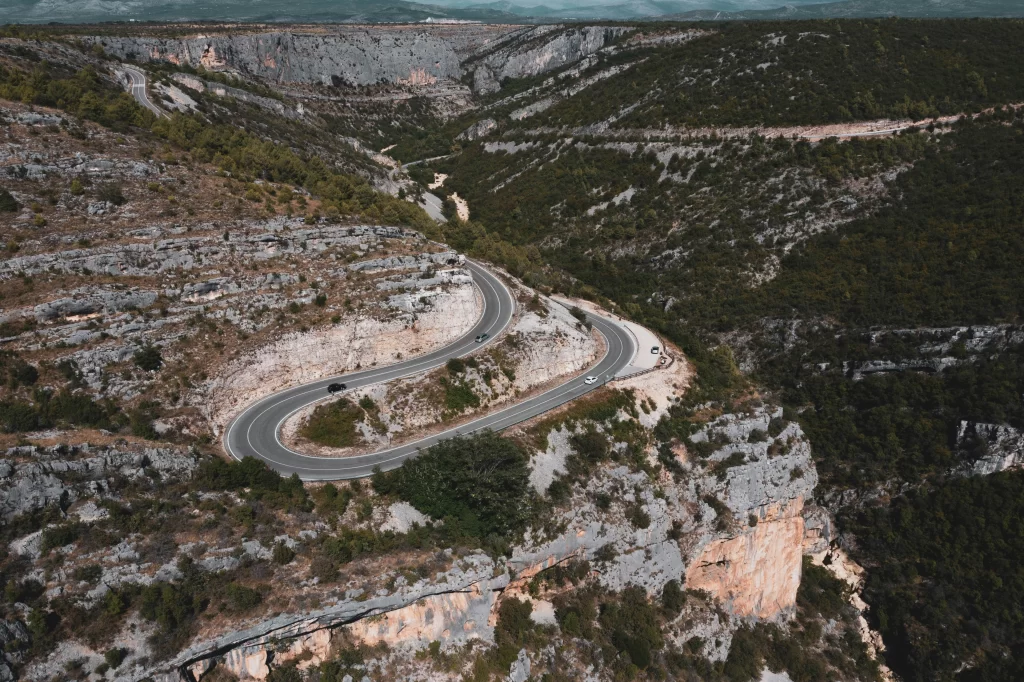One‑Way Car Rental Croatia: Costs, Tips & Routes

Croatia is a narrow, elongated country with mountains and islands that are very interesting to drivers and travelers by car. Tourists often arrive in one city and leave from another – perhaps landing in Dubrovnik , driving around some of Croatia’s great roads and flying out of Zagreb or Split. Instead of going back hundreds of kilometers, a one‑way car rental in Croatia lets you drop off the vehicle at a different city and keep going. However, this convenience comes at a price: drop‑off fees, special insurance rules and cross‑border restrictions can surprise This guide explains where you can do one‑way rentals in 2025, how much you’ll pay, and how to avoid unnecessary charges
Major car rental companies in Croatia
Croatia’s rental market is a combination of local and international companies, with a fast-growing number of cars and other vehicles. Avis, Hertz, Sixt, Enterprise and Budget all have well-supported operations in Croatia, nad they are joined by local companies such as Oryx, Autowill, Nova Rent a Car and Uni Rent, among others. Most of these companies have offices at airports and in major cities.
Understanding one‑way car rental in Croatia
Most rental companies in Croatia allow you to pick up a car in one branch and return it to another. This service is called a one‑way rental. One‑way rentals are available on major routes like Zagreb–Dubrovnik, but they usually incur a drop‑off fees, ranging from €200 to €300. Dropping a car at another branch in the same city is typically free. While more expensive, these rentals are very useful for travelers who want more flexibility in their schedule. An example would be to land in Dubrovnik, rent a car there, drive it to Split or Zagreb and then get on a plane home from there.
Autowill Rent‑a‑Car, a Croatian rental company, charges a flat €250 one‑way fee regardless of rental duration. If you change the drop‑off location mid‑rental, a further €250 applies.
In short: returning the car to a different city costs extra, while same-city drop-offs are free. One‑way rentals are widely available between Croatia’s main hubs — Zagreb, Split, Zadar, Pula, Dubrovnik, and Rijeka.
Why do one‑way fees exist?
Drop‑off charges compensate the rental company for repositioning the vehicle back to its original location. For example, driving a car back from Dubrovnik to Zagreb takes 6–7 hours. The fee covers fuel, tolls, staff time, and lost opportunity to re-rent the car locally. Interestingly, I have a friend who did repositionings as a student job, driving rental cars from the coast to Zagreb the entire summer. He says it was one of the best jobs he ever had.
Typical one‑way fees by provider
| Rental Company | Notes |
|---|---|
| Autowill | Charges a flat €250 fee; changing return location adds another €250. |
| Hertz | Free within the same city, €300 fixed for returning to another location. International available. |
| Avis | Between €65 and €200 (taxable). International fees range from €450 to €2,000. |
| Sixt | One-way rentals supported with a fee, not easy to find on website. |
| Enterprise | Available with a fee. |
Popular one‑way routes
Dubrovnik to Zagreb
- ~600 km
- €200–€300 typical fee
- Worth it if used as a multi-stop road trip: Ston, Split, Krka NP, Zadar, Plitvice, Karlovac
Perhaps the most requested and popular route, with many landing in the popular UNESCO-listed Dubrovnik and driving north along either the Magistrala or the highway system. The costs here are high because this is one of the longest journeys you can take in Croatia, taking you across almost the entire coastline.
Split to Dubrovnik or Zadar
- ~160–230 km
- Fees vary from €100–€250
Split is another very popular destination for travelers arriving by airplane, because it is situated in the middle of the Croatian coastline. Driving from Split to Zadar can be a fantastic experience (with some great routes on the way).
Zagreb to Pula or Rijeka
- ~270 km
- One-way fees often under €150, especially off-season
- Useful for flying out of Istria or continuing into Italy
Zadar to Zagreb or Split
- Lower fees (~€70–€150)
- Good regional option; short drive with flexible rental desks
Rijeka to Dubrovnik
- Long coastal journey, high fee (~€250+)
- Scenic route: Krk, Pag, Trogir, Ston — plan 7+ days to make it worth it
Factors influencing one‑way fees
Distance and direction
The longer the drive between locations, the higher the price. This is because staff need to return the car back or transport it by trucks. Some companies use kilometers as a metric, others have zones (within Dalmatia or cross-region). Some cities are also more expensive than others, such as Dubrovnik
Seasonality
Of course, driving and returning the cars in full season is more expensive since rental car fleets are in high demand, and there’s much more traffic on the road, increasing the risk of a return being late. If you travel in the off-season, prices tend to drop 20-30%.
Type of car and equipment
Returning luxury cars and SUVs to a different location usually costs more because there is less supply of the cars. Choose smaller, cheap car rentals in Croatia to avoid these fees if possible. After all, we’re a small country and most trips will not take so much.
Cross‑border one‑way rentals
Dropping your car off outside Croatia adds complexity:
- Few rental companies allow it (e.g., Budapest, Ljubljana)
- Fees can exceed €400 and climb to several thousand.
- You’ll need a green card, special insurance, and approval from the agency
- Not all countries are supported — always ask in advance
If it’s too expensive, consider dropping the car in Croatia and using a bus/train/ferry for the final leg abroad.
How to reduce or avoid one‑way fees
- Plan a loop: Start and end in the same city. For example, start in Zagreb, travel to Plitvice Lakes and Split, and then drive back via Zadar to Zagreb. It might not be ideal for some, but a great big loop is more fun and cheaper.
- Use local agencies: Some local companies such as Oryx or Nova charge less than international brands. Try and find local car hire companies and Croatian car rental agencies to reduce costs. However, they often have lower supplies of cars.
Additional costs to consider
- Tolls: A1 from Zagreb to Split is €26.40 (Category I car)
- Fuel: Petrol ≈ €1.51/litre (July 2025)
- Insurance: Consider SCDW or 3rd-party excess coverage
- Young driver fees: ~€7–10/day
- Cross-border fees
- After-hours pick-up/drop-off: €30–€50
- GPS, child seat, ferry permission — all add cost
Step‑by‑step: booking a one‑way car rental in Croatia
pick‑up and drop‑off cities (e.g., search for “car rental Split Croatia airport” or “rent a car Rijeka”).- Check whether the one‑way fee is included in the quote.
- Check vehicle class: Decide on car size based on your itinerary. Small cars are easier to park in old
towns, while SUVs suit mountain roads. - Assess insurance options: Determine if your travel credit card or third‑party insurance covers CDW/
SCDW. If not, add suitable coverage. - Confirm allowed routes: Ask if the car can be taken on ferries or into Bosnia, Montenegro or Italy,
and whether any restrictions apply. - Secure documentation: Bring a valid driver’s license (and International Driving Permit if required),
passport and credit card. - Inspect the car: Take photos of the vehicle upon pick‑up and ensure all scratches are noted.
- Return on time: Arrive at the drop‑off location with enough time for inspection. Refill the tank to avoid refueling charges.
Frequently Asked Questions (FAQ)
Q: Do all rental companies allow one-way rentals?
A: Most major ones do, but some local firms only support returns at the pickup location.
Q: What does it cost in 2025?
A: ~€20–150 for short trips; €200–300 for long ones. Autowill, for example, charges €250 flat.
Q: Is round-trip cheaper?
A: Usually yes. Returning to the pickup location avoids the fee.
Q: Can I drop off my car in another country?
A: Some times yes, but not every company offers it. Fees are very high and you’ll need special documentation.
Q: Does car type affect the fee?
A: Yes — economy cars are cheaper; SUV and luxury cars are more expensive
